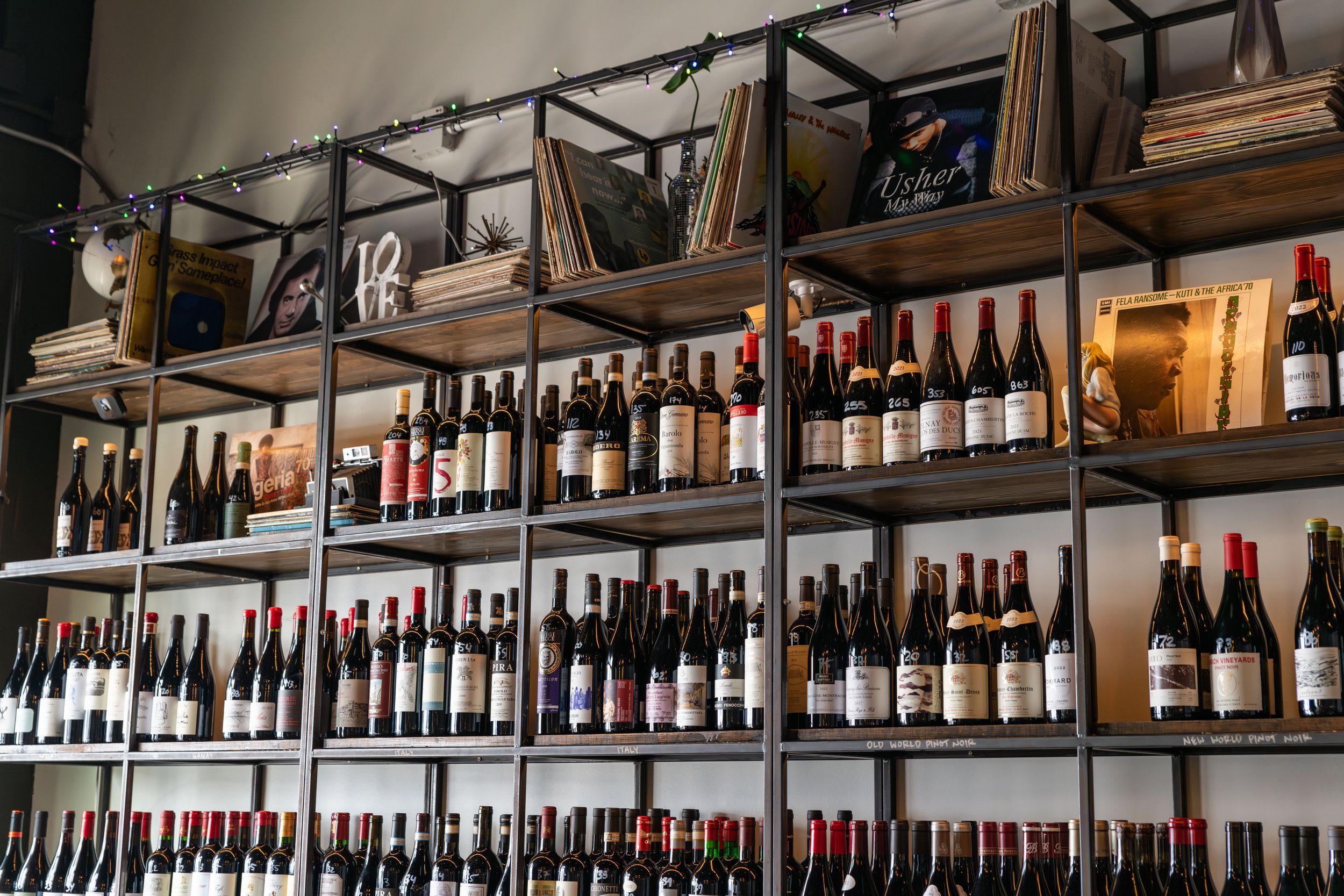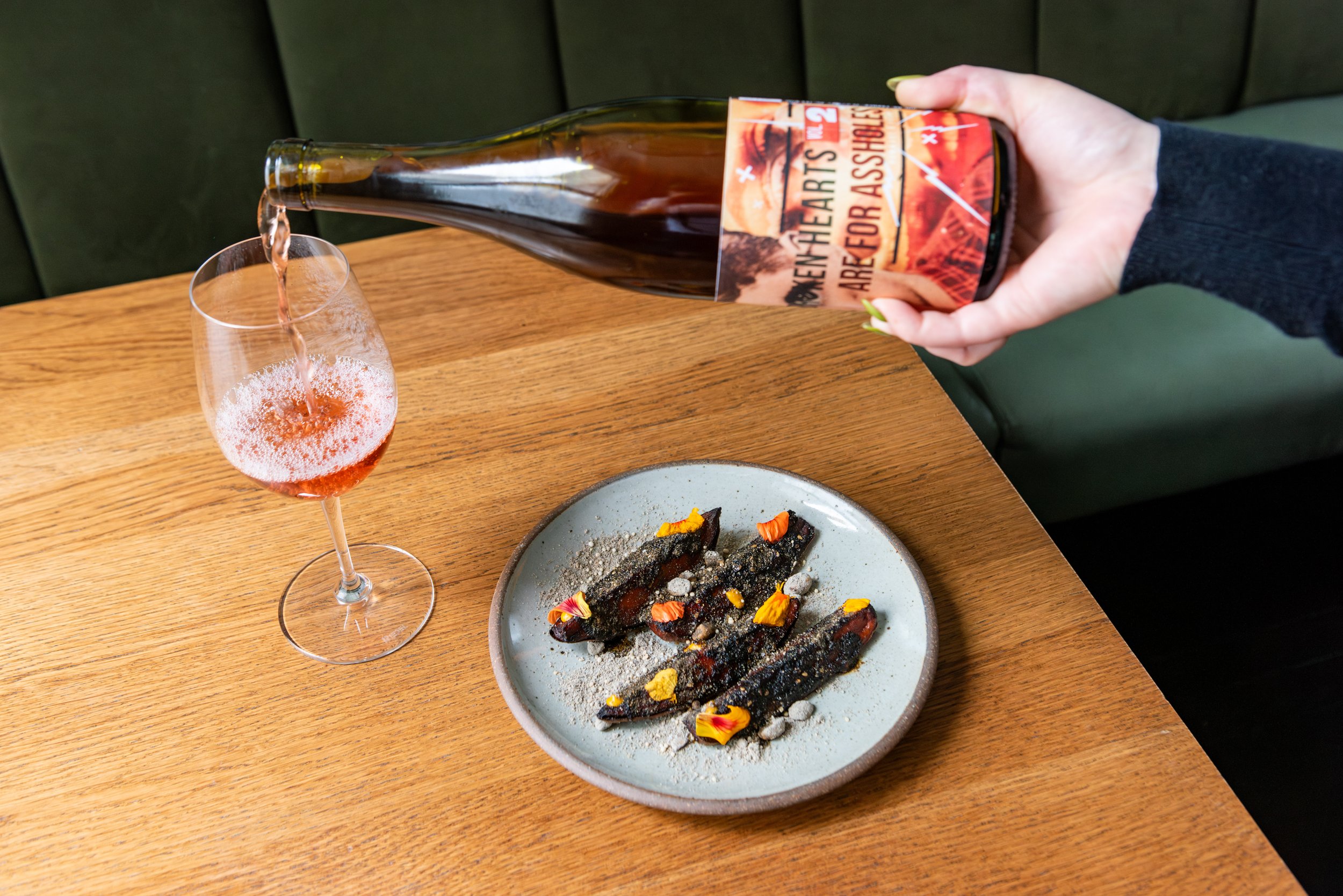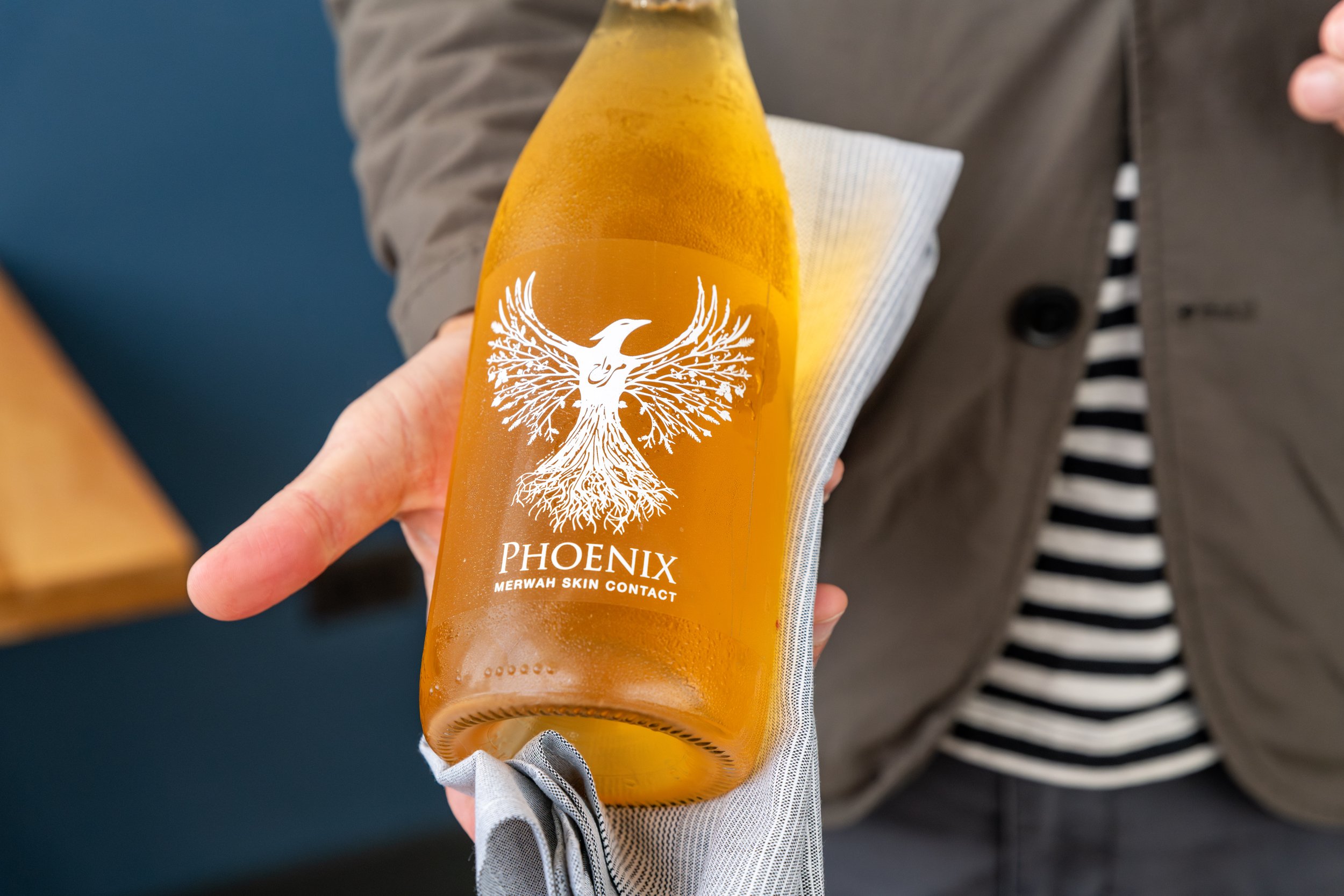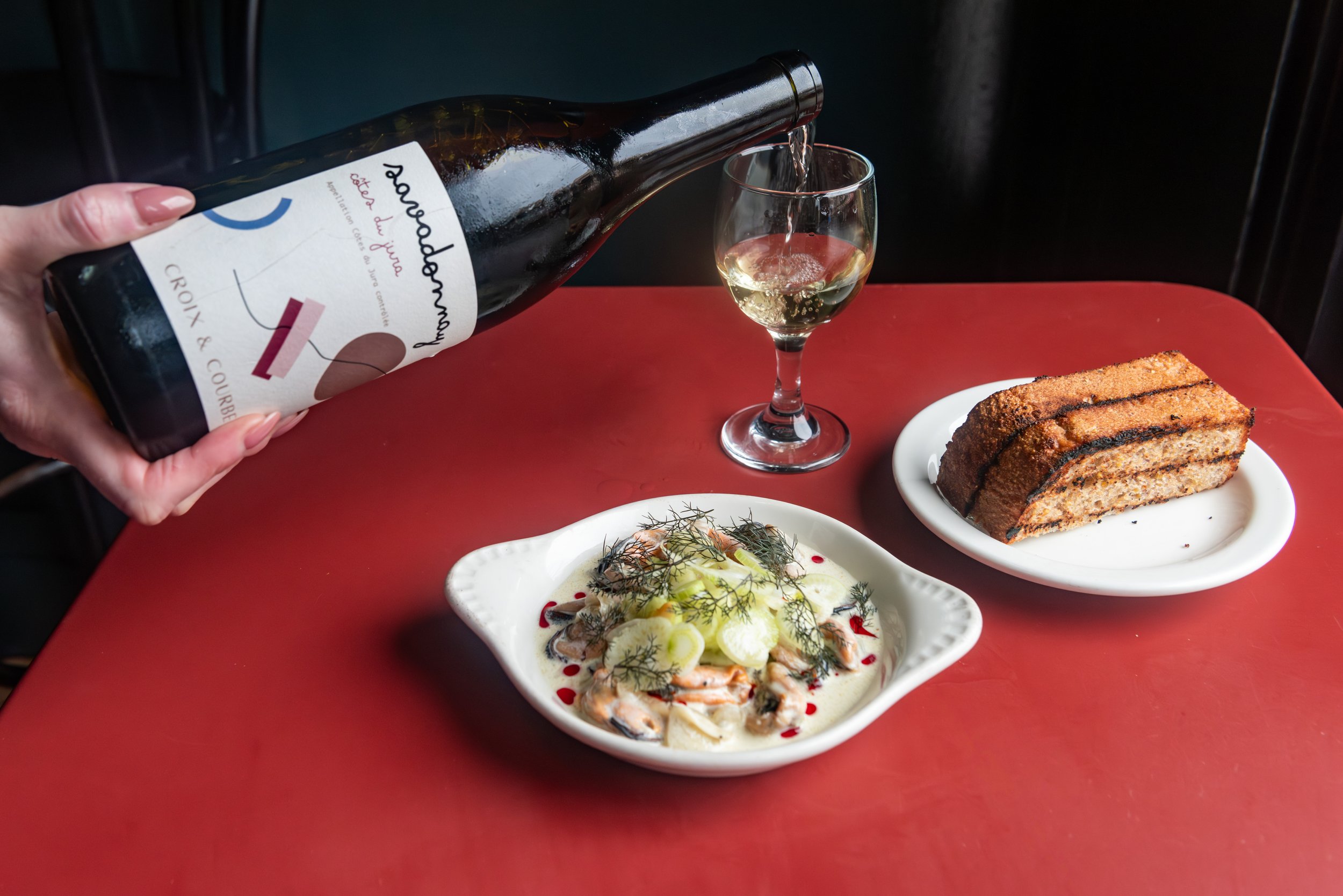Great Lake Grapes: Putting Michigan Wines on the Map
With a temperate climate and thirsty locals, Michigan is rapidly becoming a new hub for American wine
Estefanía Bermúdez, the beverage director at Mi Tocaya Antojería, first tasted Michigan wine about seven years ago when she worked at S.K.Y. “Our beverage director put on a chardonnay from Wyncroft,” she says. “We were all like, ‘What the fuck, I didn’t know you could get wine from Lake Michigan.’ I tasted it and thought, ‘Woah, it’s so good, so dif ferent, salted, mineral-laden.’ That’s how I got introduced to wine from Michigan,” says Bermúdez. “That’s how I got introduced to wine from Michigan,” says Bermúdez.
“We’re the up-and-coming region,” says Maxx Eichberg, co-owner of Stranger Wine Company in Buchanan, Michigan. In the last few years, he says, the state’s wine has skyrocketed in popularity, and farmers and winemakers are paying more attention to sustainable, low-input farming.
“People in the wine industry are very much in tune with what Michigan represents and its future,” says Pete Ternes, co-owner of the brewery and winery Middle Brow. Five years ago, when attending Third Coast Soif, “people would nod or not acknowledge Michigan wine,” he says. “In the last two years, people say Michigan is the next Washington or New York.”
The Climate
The growing interest in Michigan wine directly ties to the changing climate and pressures people feel in other regions, says Eichberg. “Michigan is the place for sustainability at this point,” he says. “There’s opportunity here.”
Michigan has a leg up because it’s been growing quality grapes for a long time, adds Ternes, who predicts a growing interest in local grapes and wine will also occur in other regions around the U.S. and Canada.
Another advantage: location. Drive less than two hours from Chicago, and you’ll hit the Lake Michigan Shore American Viticultural Area. “People can visit vineyards in person and ask important questions about how owners and winemakers are treating farmers and the people picking, nurturing, and harvesting their grapes,” says Bermúdez.
“Napa Valley is an hour from San Francisco, Willamette Valley is an hour from Portland,” says Eichberg. “Being close to major city centers that have large amounts of money and a different economic threshold, why not put our eggs in that basket?”
Michigan’s climate, particularly in the southwest, provides unique growing characteristics. “We have a huge cooling and extended growing season from the lake,” says Eichberg. He and co-owner (and wife) Sidney Finan started Stranger Wine in 2021, ending up in Michigan thanks to COVID shutdowns.
“[Lake Michigan] affects how long our season is,” he adds. “We have a really extended season where we don’t have a problem ripening fruit.” “If [climate changes] continue, then the cold events where it gets down to negative 10 will be more destructive for the industry as a whole,” says Eichberg. On the bright side, he adds, Michigan doesn’t typically see natural disasters like tornadoes, and the state has plenty of access to water. “We have a winter and spring frost here and there, but we’re pretty well-suited for climate change,” he says.
The Grapes
Thanks to the cooler climate, Michigan wines trend bright and vibrant, says Bermúdez. “Sometimes I say they're wild, each has its own personality.”
“The best Michigan wines really do taste like the grounds that we farm, like the environment we grow in,” adds Eichberg. They’re fresh, fruit-forward, and brimming with personality and a sense of place.
“They are generally lighter body, higher acid wines,” says Ternes. “We try to be as hands-off as possible from a winemaking standpoint,” he adds, using fruit grown with the least amount of intervention possible. “Our style [at Middle Brow] is low tannins, light bodies, decently high acidity—wines that are more crushable.”
Farmers in the state grow both European and hybrid varieties. For the tradition-bucking Middle Brow, hybrids such as Marquette, Maréchal Foch, and seyval blanc lend aromas and flavors new to the typical wine drinker. “They’re either confused or they light up,” says Ternes. “Like ‘holy shit, how exciting is this, finally something different.’”
Eichberg and Finan, on the other hand, prefer the traditional vines, including pinot noir, cabernet sauvignon, pinot gris, chardonnay, and grüner veltliner. “The traditional grapes around here are older vines, which tend to produce higher quality wines as the grapes are more concentrated,” says Eichberg. “I think there’s a bright future for both. Hybrids have a way about them, but we’ll always have the traditional vinifera. It’s all personal preference.”
From a pricing perspective, Michigan wines clock in at typical price points for their categories. A glass at Middle Brow and their pizzeria outpost, Bungalow, ranges from $13 to $18. “Over time, as we get into riskier projects, longer aging, they’ll be higher priced like they are from everywhere else,” says Ternes.
Stranger’s wines are on the higher end for Michigan prices, at $24 to $42 per bottle, but affordable by national standards. “You’d have to spend $50 in Sonoma to get a high-quality pinot noir comparable to ours,” says Eichberg. “We price them because we know what they're worth, but we also want to make it as accessible as we can.”
The Connections and Community
When they first started brewing in 2010, the Middle Brow team focused on sourcing local malt and hops. While scouring the states surrounding Lake Michigan for ingredients, they also, naturally, ran into wine. “We were in Michigan, Wisconsin, and Indiana. Being in those places and connecting with farmers in one respect makes it easy to connect in another,” says Ternes, who credits an interest in native fermentation to lead him toward winemaking.
“It sounds like I lack perspective,” adds Ternes, “but I swear that craft beer [shifted] the local movement from food to beverage, but local wine has taken quite a while to catch on. They’re interested in the local wines because it’s a giant hole in their menu that we can fill.”
After his first winemaking stint, Eichberg worked for the Chicago-based distributor Cream Wine & Spirits, where he met somms and managers who are now directors of hospitality and restaurant groups. “I had a very unique pathway into the Chicago market,” he says. “People were excited and knew Stranger was starting. It was a homecoming in a way.”
Bermúdez echoes that sentiment. “The boom in Michigan wine in Chicago also coincides with the togetherness and community that it inherently brings,” she says. “I feel that as Chicagoans and folks from the Midwest, we are so proud of our local produce, farmers markets, etc., and now seeing Michigan, and soon Indiana and Wisconsin, and more—it just makes me even prouder to see such soulful fermented beverages getting the recognition they deserve.”
Last year Bermúdez spent a week working the grape harvest in southwest Michigan. “Seeing how many farmers and producers were holding space and community for each other was really inspiring,” she says. “It’s a community thing. I feel like I have a responsibility to support them.”







Tips on building a wine list that works for everyone from Sommelier Thibaut Idenn of Alla Vita and Boka